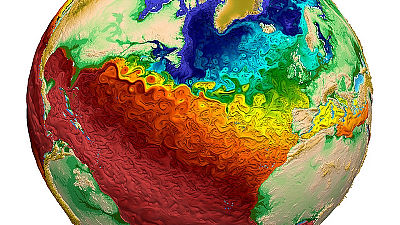How would a 'nuclear winter' damage the world's food supply?
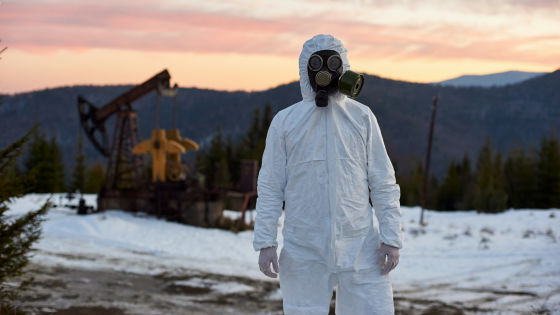
If a nuclear bomb were used in war, it would not only cause damage to the surrounding area from the explosion and radiation, but also trigger a '
Adapting agriculture to climate catastrophes: the nuclear winter case - IOPscience
https://iopscience.iop.org/article/10.1088/1748-9326/adcfb5
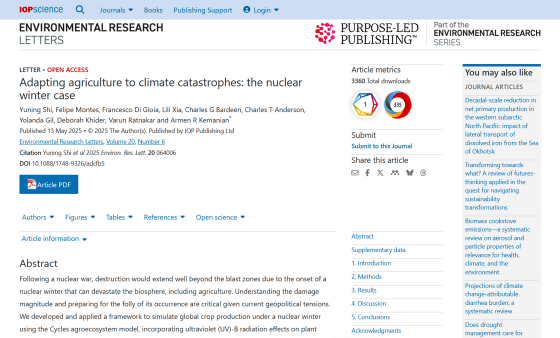
Simulating the unthinkable: Models show nuclear winter food production plunge | Penn State University
https://www.psu.edu/news/research/story/simulating-unthinkable-models-show-nuclear-winter-food-production-plunge
A Nuclear Winter Could Destroy Much of The World's Food Supply : ScienceAlert
https://www.sciencealert.com/a-nuclear-winter-could-destroy-much-of-the-worlds-food-supply
A nuclear war could cause the Earth's temperature to drop sharply, blocking sunlight and disrupting agriculture worldwide. A research team led by researchers at Pennsylvania State University has modeled how a nuclear winter would affect the production of corn, the world's most widely grown grain.
'We simulated corn production at 38,572 locations under six increasingly severe nuclear war scenarios, varying soot injection rates from 5 million to 165 million tons,' said Yuning Shi , lead author of the paper and an associate research professor in the Department of Plant Sciences at Pennsylvania State University.
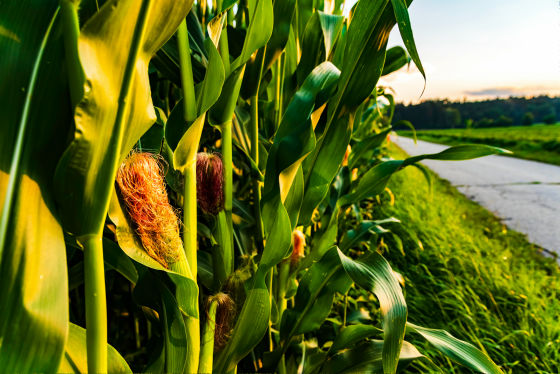
The simulations were conducted using
The simulations found that even in a scenario of a localized nuclear war in which only 5.5 million tons of soot were released into the atmosphere, global corn production would decline by 7 percent. In a worst-case scenario in which soot emissions reached 165 million tons, corn production could decline by as much as 80 percent.
The figure below shows the decline in corn production in various regions over time following a nuclear war, based on a scenario in which the amount of soot released into the atmosphere is approximately 500 tons (left) and 150 million tons (right). The larger the amount of soot released, the larger the area in which corn production declines, and the greater the percentage decline. The figure also shows that the effects of the nuclear war are still being felt 12 years after the war.
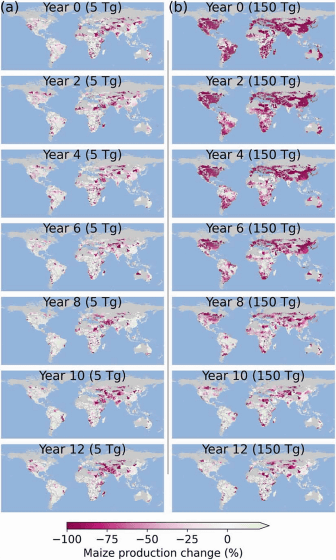
The research team also modeled the effects of atmospheric soot as well as an increase in UV-B radiation , a more energetic form of ultraviolet radiation. UV-B radiation causes DNA damage, oxidative stress, and reduced photosynthesis in corn plants. Nuclear war-induced ozone destruction caused by nitrogen oxides and heat from soot could increase UV-B radiation reaching the Earth's surface.
The team's simulations estimated that UV-B radiation would peak six to eight years after a nuclear war, reducing corn yields by an additional 7%. Combining the effects of soot emissions and UV-B radiation, the team calculated a corn yield reduction of 87%.
The research team pointed out that if a nuclear winter were to occur, switching to varieties that can grow in a shorter growing season and at lower temperatures could increase corn production by 10% compared to doing nothing. Therefore, they recommended that preparing 'agricultural resilience kits' containing seeds of varieties that are prepared for cold weather in advance could help mitigate the damage caused by a nuclear winter.
Related Posts:

